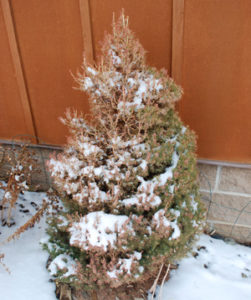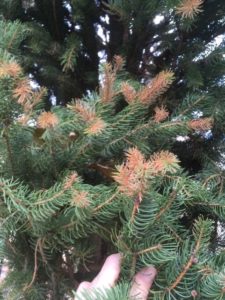2020 was quite the year for natural disasters, wasn’t it? COVID-19. Severe weather. Wildfire. With COVID stay-at-home orders, many more people took time last year to start gardens and tend to their yards. And where there are plants, there is opportunity for plant disease.

First, what is plant disease? By definition, disease is anything that keeps a plant from performing to its full potential. Disease can be caused by ‘biotic’ (living) factors, like bacteria, fungi, and viruses. It can also be caused by ‘abiotic’ (non-living) factors such as weather or chemical damage.
Below is a review of the top five residential plant diseases in Colorado in 2020, as seen through the lens of the Jefferson County Extension Plant Clinic in Golden.
Editor’s note: For CNGA members in New Mexico, NewsLeaf checked with the New Mexico State University (NMSU) Plant Diagnostic Clinic. Plant Diagnostician Phillip Lujan reported, “The environmental disorders listed here are spot on and make up a lot of what we have seen in 2020, especially in northern New Mexico.”
Dr. Leslie Beck, NMSU extension weed specialist and assistant professor, agreed and added, “I have had several plant samples submitted to the clinic with damage that was suspected to be a result of herbicide applications. Upon further investigation they were caused by multiple abiotic stressors ranging from greatly fluctuating temperatures, extreme heat, drought, winter desiccation, and freeze damage.”
#1 Environmental Disorders: Weather
In 2020, the most frequently diagnosed problem in the Jeffco Clinic was plant damage caused by severe weather. With three sudden freezes across the Front Range, the majority of the plant problems brought into the clinic have been diagnosed as winter desiccation or freeze damage. With the freezes of October 2019 and September 2020, plants had not yet hardened off for winter, resulting in freeze damage. In the spring freeze of April 2020, many plants had started to come out of dormancy and tender young buds and leaves were frozen. The cumulative effect of these three freeze events continued to show up all season long.
Biotic Diseases
Even with all the freeze damage, the Jeffco Clinic continued to receive samples that exhibited typical biotic problems, although 2020 had a much lower incidence of diseases commonly seen here in 2019 (fire blight, oak leaf blister). Here the most frequently reported biotic diseases.
#2 Turf Problems
- Necrotic Ring Spot is a perennial disease caused by a fungal pathogen of Kentucky Bluegrass. It thrives in grasses that have poor drainage and are overwatered.
- Fairy Ring is a fungal infection that can be caused by 60 different fungi. Generally, fairy rings occur when turf is under-watered or under-fertilized.
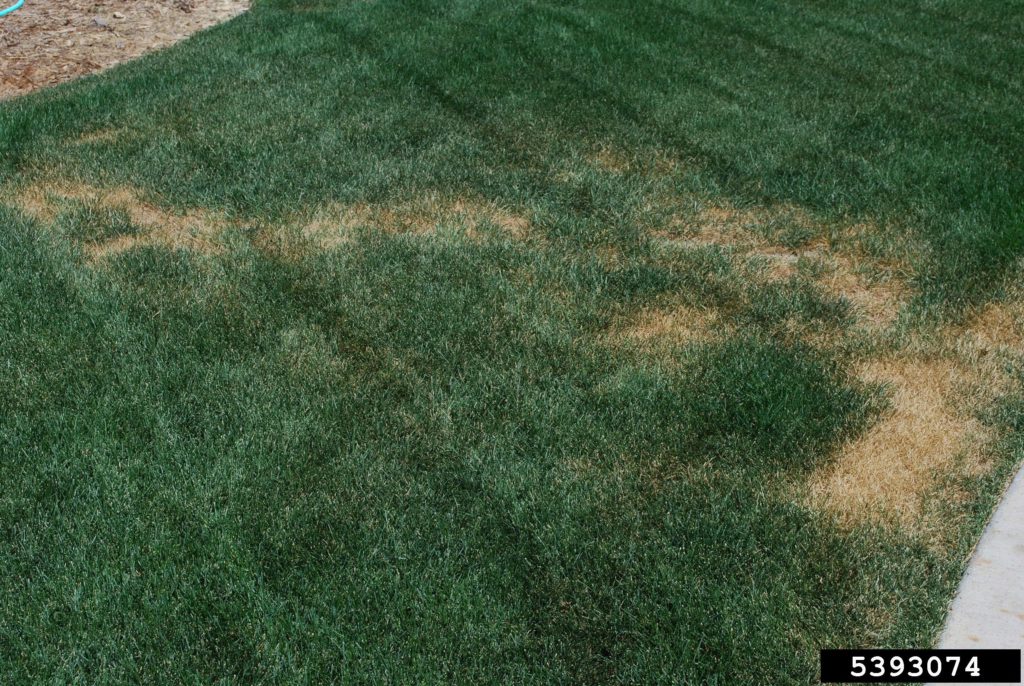
#3 Powdery Mildew
Powdery mildew fungi are ubiquitous, with most species being host specific, but some being generalists. Cultural control (pruning, water management, etc.) is the first line of defense.

#4 Tomato Disease
Tomato disease can be caused by nutritional imbalances or by pathogens. In 2020, pathogens were predominant.
- Early blight (Alternaria spp.)
- Fusarium wilt (Fusarium spp.)
- TSWV (Tomato Spotted Wilt Virus)
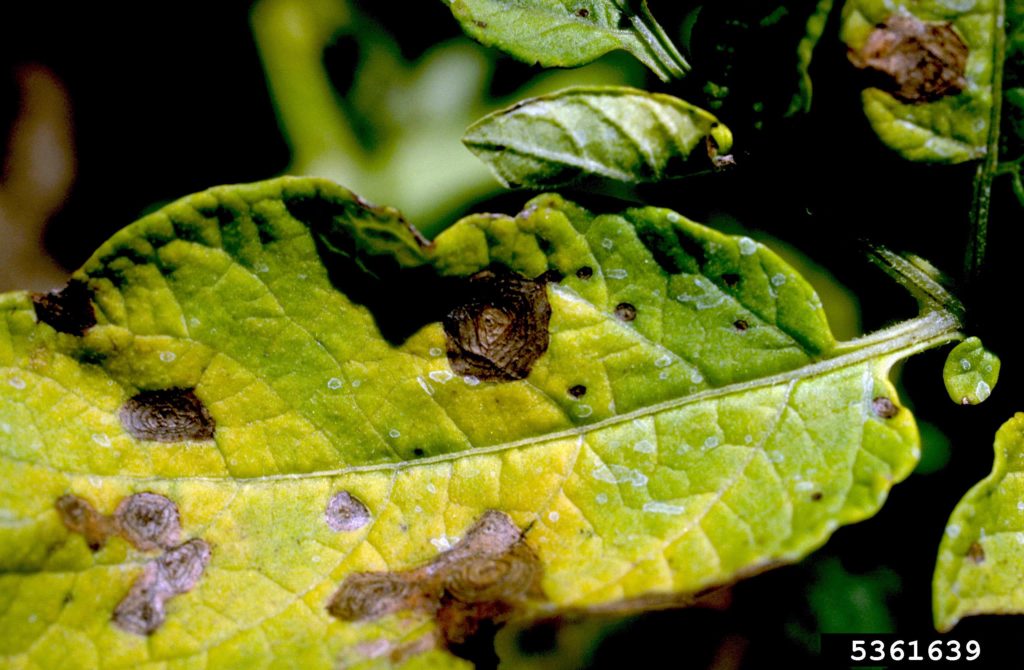
#5 Root rots of greenhouse/indoor plants
We saw two cases of fungal root rot on indoor plants, both incited by overwatering:
- Phytophthora root rot
- Fusarium rot
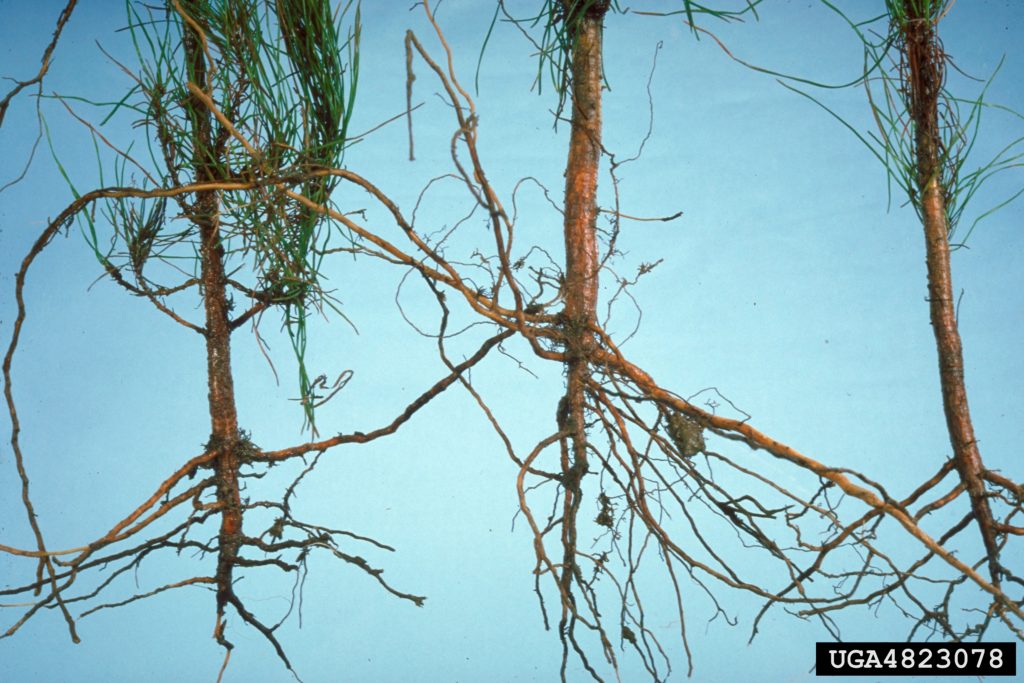
Regardless of what plant disease 2021 sends our way, prevention is the best management tool. Awareness of what diseases can affect a plant host enables the gardener to monitor and intervene before disease develops.
About the contributor: Mari Hackbarth coordinates the Plant Diagnostic Clinic at the Colorado State University Extension in Golden. Services offered by the Plant Diagnostic Clinic include insect identification, plant identification, and diagnosis of plant diseases along with management recommendations. Fees start at $7 for Jeffco residents, $15 for commercial, and $20 for specialized tests. Get information on location, hours, sample submission guidelines, and fees.



